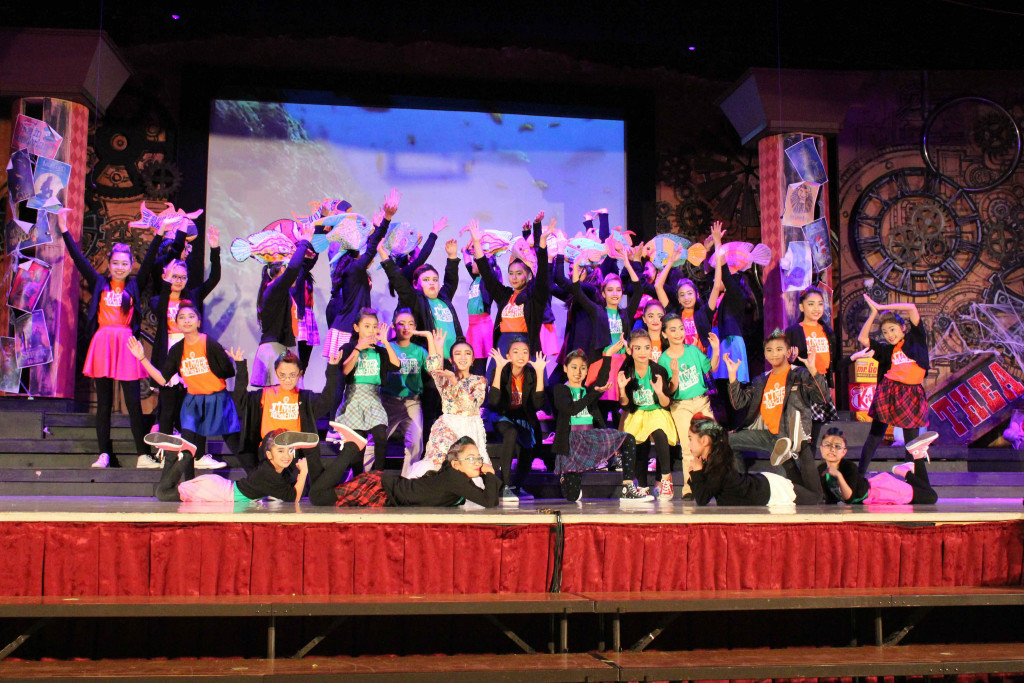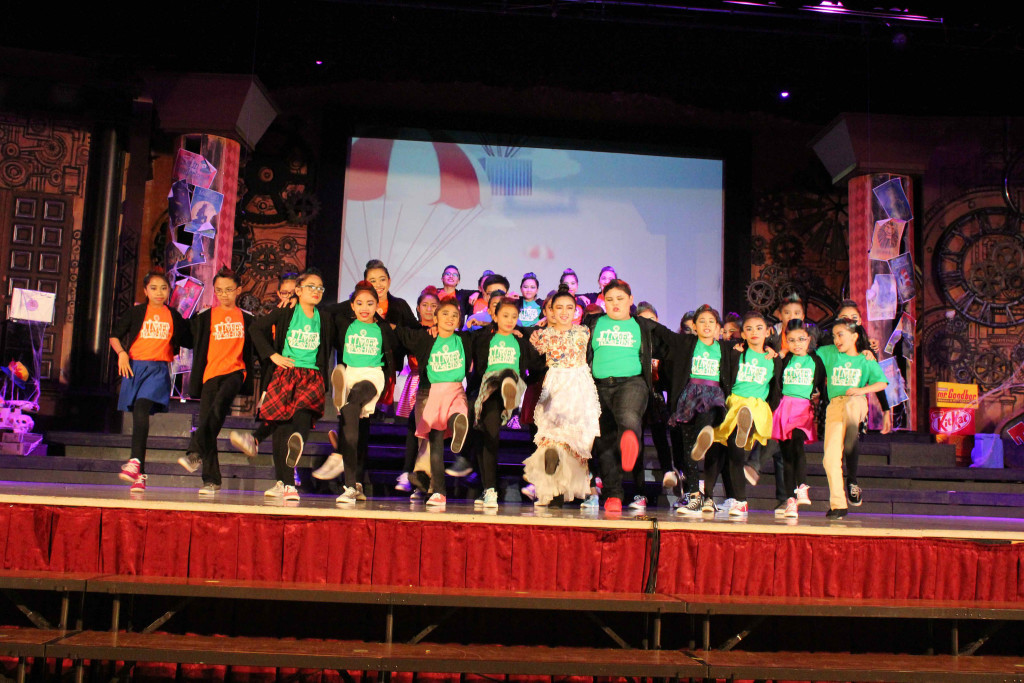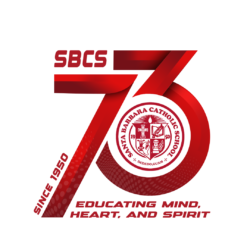“Curtain Call” Spring Play
April 4 & 5
Honk Jr. Spring Play
Congratulations to all the performers, production staff, teachers, students, and parents on putting on an outstanding Spring Play!
Madagascar Jr. April 6 & 7 show
Madagascar Jr. March 30 & 31 show
Santa Barbara Catholic School 2016 Spring Production: Theater for Theater
 April 15, 2016
April 15, 2016
by:Robyn Julianne Castro
“Theater is more than Entertainment!” exclaims Maria in Santa Barbara’s Catholic School’s Spring Production, “The T.I.M.E. Machine,” TIME, being an acronym for what became the play’s catch tagline and take-away lesson.
The play is an original, written by former SBCS faculty member, Frederick “Icko” Gonzalez. It is a unique and straightforward “meta-play,” a play about plays. It looks back on some of the school’s past Spring productions, each having made a mark in SBCS history, on the families, and most especially on the students who made it possible. Productions such as Annie, Willie Wonka and the Chocolate Factory, and Alice in Wonderland were not only special mentions scattered in the storyline, but had integral parts in the story’s progression.
The main characters themselves were allusions to past Spring productions. Set in the “steam punk” era, the play opens with Fiona played by Jessirene Rivo (7B), Horton played by Sam Lagman (7A), Jasmine played by Abigail dela Cruz (7B), and Edmund played by Senwin Pareja (8A) discovering a laptop device that takes them into the past, using the passcode “go.to.SBCS2016” with the help of Maria, played by Kyra Dela Cruz (6B) and named after the beloved lead of the Sound of Music. Maria lamented that theater no longer exists in the “future” and so she asks the main characters for their help to bring theater back by answering seven questions about theater in order to break the spell.
Enter Mr. Antagonist played by Jayvee Elomina, (8B), a dramatic and caped Phantom of the Opera-like villain who reminds the audience that he has come, “to make sure that there’s drama, suspense in the place!” Against theater, where he is “always the bad guy,” he proceeds to challenge the characters to answer theater related questions in order for them to save theater. His catch – the heroes are not allowed to speak. The main characters must approach the audience to help them answer questions such as the definition of conflict, to identify which play certain props are from, and to describe a musical. The audience members become major characters, with Mr. Antagonist even addressing some of them personally by name. In the end, theater is saved when all seven questions are answered. The play ends on a happy note when Mr. Antagonist realizes that he does have an important role to play in a musical theater “What’s a good story without a conflict,” Fiona reminded him.
theater is saved when all seven questions are answered. The play ends on a happy note when Mr. Antagonist realizes that he does have an important role to play in a musical theater “What’s a good story without a conflict,” Fiona reminded him.
The play is undoubtedly a musical, with classes performing dance numbers to popular theme songs, such as Mary Poppins’ “Supercalifragilisticexpialidocious“ by the 6th and 7th graders, The Lion King’s “Hakuna Matata,” by the 4th and 5th graders, The Sound of Music’s “Do Re Mi,” by the 2nd and 3rd graders, Pharell William’s “Happy,” by the Kinder students and 1st graders, and Snow White’s “Heigh-Ho!” by the K4 class.
Each class dressed up to fit the song’s setting and theme, with one highlight being the Kinder and 1st grade students coming out in yellow construction worker outfits and one-eyed hats as a reference to now iconic Minions from Despicable Me.
The Company dancers, Chorus and Honor Choir also presented tight choreography and solid voices with their own impressive production numbers of Disney Showstoppers and an Aladdin medley.
The play was directed by Ms. Joyce Guevara who also took charge of the lighting design. The rest of the creative team consisted of: Sr. Jeanette Marie Pangelinan, Executive Producer; Sr. Maria Rosario Gaite, production manager; Ms. Dolly Diaz, musical director, Mr. C’zer Medina, lead choreographer, Mr. Chito Santos, production design; Mrs. Maricon Gozum, stage manager; Ms. Clara Badong, assistant stage manager; Ms. Bernadette Alcantara, costume mistress and lapel mics coordinator; Mr. Michael Gaite, assistant choreographer, Mrs. Ahra Miranda class choreographer; Mrs. Madeline Fernandez, class choreographer; Mr. Julius Cena, video projection; Mr. Von Apuya, technical director; Mr. Joel Suplido, poster and souvenir booklet; and Mrs. Miriam Piaña, marketing manager. The play’s production staff consisted of students from 4th to 6th grade.
Major sponsors were: (Gold) Bank Pacific, (Silver) Bank of Guam, Jones & Guerrero Company, Inc. Pacific Daily News, (Bronze) Royal Bics, and Sylvan Learning.
Hairspray’s “You Can’t Stop the Beat!” was the play’s lively finale number, with everyone, including Mr. Antagonist joining in. The production garnered a packed gym for the play’s closing show, and much laughter and singing-along for all four showings on April 7, 8, 14, and 15. The T.I.M.E. Machine was an ode to theater with a beat that couldn’t be stopped!
T.I.M.E. Machine “Theater is More Than Entertainment”
Written by: Mr. Frederick “Icko” Gonzalez
Directed by: Ms. Joyce Guevara

